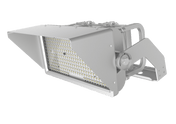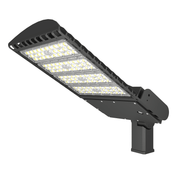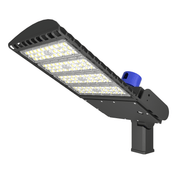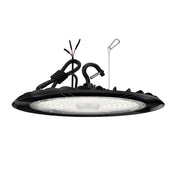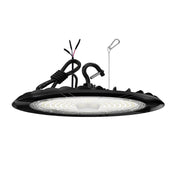The IK rating (Impact Protection) is a standard used to measure the resistance of electrical equipment enclosures to mechanical impact. The IK rating was developed by the International Electrotechnical Commission (IEC) to ensure that in the event of an accidental impact on the equipment, the internal electrical components and other critical parts of the equipment can be effectively protected from damage due to the collision, which may lead to safety accidents, such as electrical short circuits, fires and so on.
What do the IK Rating Numbers mean?
The numbers that follow the IK have a specific meaning and indicate the level of protection from mechanical impact. It is a 1 to 10 system with a higher number indicating a more robust product able to maintain safety at higher energy impacts.
How do we test for an IK Rating?
By applying the required amount of energy (joules) to the enclosure. We do these standard tests in a controlled environment by 'control dropping' set weights from set heights and angles onto the enclosure. To apply the correct amount of impact energy (joules) we use the specified method in the standard to deliver the energy. Strikes without bouncing are performed three times on the same spot. This test is performed at several locations on each test enclosure, looking for weaknesses, to ensure the IK rating is valid for the whole product, not just the tougher bits.
Two main elements for IK testing
The impact energy (in joules) depends on 2 elements:
- The distance between the hammer and the tested sample
- The hammer weight
Table of IK rating test standards

| IK rating | Testing capability |
| IK00 | Not Protected |
| IK01 | Protected against 0.14 joules impact Equivalent to an impact of 0.25kg mass dropped from 56mm above-impacted surface. |
| IK02 | Protected against 0.2 joules impact Equivalent to impact of 0.25kg mass dropped from 80mm above-impacted surface. |
| IK03 | Protected against 0.35 joules impact Equivalent to an impact of 0.25kg mass dropped from 140mm above-impacted surface. |
| IK04 | Protected against 0.5 joules impact Equivalent to impact of 0.25kg mass dropped from 200mm above-impacted surface. |
| IK05 | Protected against 0.7 joules impact Equivalent to an impact of 0.25kg mass dropped from 280mm above-impacted surface. |
| IK06 | Protected against 1 joule impact Equivalent to an impact of 0.25kg mass dropped from 400mm above-impacted surface. |
| IK07 | Protected against 2 joules impact Equivalent to an impact of 0.5kg mass dropped from 400mm above-impacted surface. |
| IK08 | Protected against 5 joules impact Equivalent to the impact of 1.7kg mass dropped from 300mm above-impacted surface. |
| IK09 | Protected against 10 joules impact Equivalent to the impact of 5kg mass dropped from 200mm above-impacted surface. |
| IK10 | Protected against 20 joules impact Equivalent to the impact of 5kg mass dropped from 400mm above-impacted surface. |
Other factors in IK testing
For LED light, we think the IK rating test shall be carried out at required atmospheric conditions(temperature and pressure), and the impact should be applied to the entire lamp. We also have to decide how many impacts should be made and even the distribution of the impacts, the size, style, dimensions, and even material of the various types of hammers (objects) designed to produce the energy levels required.
So IK Ratings is a little subjective. For EN 62262, it doesn’t specify the location of the impact. The parts such as hinges and locks are not required for testing. Therefore it is important to understand the manufacturer’s testing procedure as the enclosure’s IK rating can be affected by where the impacts were applied. It’s worth noting that if it has an IK rating it must also meet the equivalent IP rating. For example, if the enclosure maintains its IP66 rating after passing the test for IK06 protection, it can be marked as IP66 and IK06 at the same time. However if after the enclosure passes IK08 protection testing but only maintains IP54 protection, then it must be labeled as IK08 and IP54 protection or IK06 and IP66. How it cannot be labeled as both IK08 and IP66 if one test impacts the other results? If you are interested in the light IP rating, please check our article regarding the important factor IP rating.
How does the street light with glass pass the IK10 test?
At present, there are two main luminous surfaces for LED street lights on the market, one is covered with an optic pc lens, which is generally a modular design LED street light; the other is covered with tempered glass while PC or PMMA optics lens inside the luminaire, so tempered glass plays a protective role. These lamps are generally designed for full die-casting street lamps. When the PC lens is covered, the IK rating test can easily reach IK10, but when the covering surface is glass because the glass is easily broken under the impact, generally 4mm thick glass can only reach IK08, but more and more bidding projects require glass design and provide IK10 test report as well, which stop a lot of bidders. So how does the street light with glass pass the IK10 test? As a professional LED street light manufacturer, Hylele has more than 17 years of experience in LED street light design. After learning about the latest project requirements, our engineers and glass suppliers have repeatedly researched and tested, through strict control of the tempering process temperature, to maintain glass consistency, and at the same time slightly increasing the thickness of the glass, coupled with a special buffer design, finally solved this problem, and successfully launched the AL series street lights with glass and passed the IK10 test. If you are interested, you can contact the Hylele team.
Conclusion
The integrity of any electrical device depends not only on the functional capabilities of its components but also on its robustness against physical interference. This is where IK ratings are key; they are more than just numbers, they are indicators of resilience and reliability that can be measured against industry standards.
In an environment where manufacturing standards are constantly changing, IK ratings remain the fundamental benchmark for assessing durability and safety. Recognizing that these ratings go beyond current needs allows us to envision a continuum where safety and durability are paramount.
As guardians of safety and efficiency in industry, we must elevate consideration of IK ratings from perfunctory checkboxes to critical criteria in the design and procurement process. Carefully incorporating appropriate IK ratings into future engineering and equipment selection is not only a proactive move but is consistent with a vision of enduring quality and unwavering safety standards. It fosters a culture of informed decision-making while prioritizing protection, compliance, and economic understanding.


